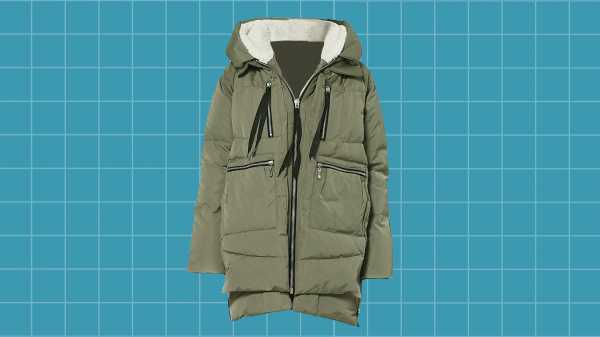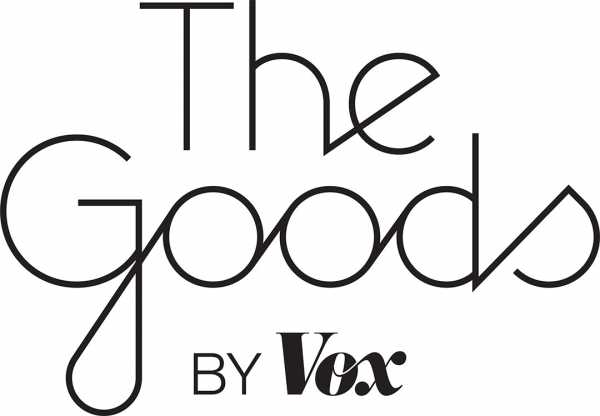

All winter long, in addition to crappy weather and increasingly weird news cycles, I have been terrorized by a coat.
“People are going absolutely wild over this jacket on Amazon,” AOL yelled at me. “‘The Amazon Coat is taking the internet by storm,” shouted Yahoo. “Everyone you know is buying this Amazon coat,” echoed Glamour, which sounded somehow like a threat.
These increasingly sinister warnings came from more unexpected places, too. CNBC wanted to tell me all about why this Chinese-made coat was a must-have for US consumers. Business Insider suggested that the affordable cost of the viral down parka by Orolay should terrify Canada Goose. Even the Daily Caller — the Daily Caller! — was trying to get me to buy this one particular coat.
Mind you, I tried very, very hard to avoid it. I did not click on any article or fave any tweet that told me how viral the coat is or how great it is or how affordable it is or how, actually, it’s ugly and whoever is buying it is a big idiot.
This was not because I thought that the coat was overall pretty boring and looked like every other coat, which it kind of does. It wasn’t just that I hadn’t actually noticed anyone wearing it, which I hadn’t. It was because I deeply, truly, did not want to participate in one of my least favorite forms of journalism, specifically fashion journalism: fabricating a trend from very little actual evidence.
The Amazon coat wasn’t an entirely made-up fashion trend, but it certainly was the sort of trend that exists primarily because we were told it was trending. Whether it actually was is more complicated.
The story of the Amazon coat began as a local news item
There is a single person on whom I can blame this barrage of breathless coat coverage, even though none of it is really even remotely her fault. Last March, Katy Schneider — an associate editor at New York Magazine’s product recommendation site, the Strategist — was given an assignment. Her colleague Amy Larocca had noticed a certain olive green parka that a bunch of very cool, very fancy women on the Upper East Side owned, and thought it might be worth investigating. The twist: The coat was cheap, and all of them bought it on Amazon.
Amy is the kind of person, Katy tells me, who is generally correct when she tells you something is a Thing. And she wasn’t wrong: Katy discovered, by asking Upper East Siders who owned it how they heard about the coat, that it spread almost entirely through word of mouth among the kind of women who owned beauty businesses or were successful creative directors and stylists. And there appeared to be a single originator: a teacher at the 92nd Street Y, where one of the women’s daughters went to preschool, who had seen it on a travel blog called the Blonde Abroad.
The Amazon coat, it should be noted, is not cool. It’s fine. It’s slightly oversized, hooded, and comes in muted colors like olive green, black, navy, and cream. There are square-shaped pockets and paneling on the front, which one coat owner attributed to the influence of Balenciaga. Others claimed with pride that their friends had thought it was by Sacai, a much more expensive fashion company. (Orolay is a brand that also sells folding chairs and storage cabinets.)
Which is why the coat itself was not the focus of Katy’s resulting story for the Strategist: It was that this affordable, nondescript coat was being worn by the kind of women whose peers might assume it was Sacai or Balenciaga.
“These were all ultra-stylish, fancy Upper East Side women who have a lot of style, and if they’re choosing to wear something, it’s intentional,” Katy says. “The mystery of it made it particularly interesting: Why are these fancy ladies wearing this coat? Then there was an answer.”
Despite the fact that it was a relatively small local trend story for a New York-focused media brand, the post surged. A few weeks after it was published, Amazon noticed, too, and reached out to the Strategist asking what was going on. By now, the Strategist post is responsible for driving nearly 10,000 sales, and the coat has “Best Seller” slapped on its product description.
How an Amazon coat becomes “the Amazon coat”
The Strategist post didn’t spark hoards of coverage and copycat articles right away. Katy says that the story really picked up in earnest just two months ago, around the time the New York Times included it in a piece about stylish Brooklyn moms, the wildly popular blogger Something Navy posted an Instagram story about it, and, of course, an entire Instagram devoted to sightings of the coat popped up.
All of these elements: a compelling backstory, an Instagram account, an accessible price point, and most importantly, thousands of reviews on Amazon and the title of “Best Seller” made it virtually irresistible for pretty much any publication that remotely covers fashion. And with the New York times officially christening it “the Amazon jacket,” a clothing item became a Clothing Item, capitalized thusly.
Since December, headlines declaring that absolutely everyone you know is buying the Amazon coat, or that the Amazon coat was taking over entire cities, have been inescapable, despite the fact that the evidence is often nebulous: Sometimes it’s a New York–based writer claiming to have seen a few on the subway, but most often, it’s just rehashing Katy’s original reporting. For instance, though many of my New York-based coworkers had heard about and seen it in real life, none of the women in our DC office even knew the coat existed (and it’s not as if DC isn’t also part of the East Coast media bubble).
It’s a phenomenon that Katy has complicated feelings about. “I think now [journalists] are just like, ‘This is a thing.’ It’s not really reported,” she says when I ask if she thinks the coat’s popularity has been exaggerated. “This was a tiny story. I don’t think we were pretending it was anything it wasn’t.”
But a funny thing happens when a ton of publications tell people that a certain coat is going viral: It actually does go viral. “So many articles were being written that made it out to be a larger thing than it was, and then I think it became as large as it was being reported,” Katy says, laughing. The Orolay coat now has around 6,500 Amazon reviews and virulent fans across the US and Canada. And most tellingly, the Upper East Side women who started it all are now kind of over it.
Why non-viral viral coats keep happening
When a trend, manufactured or not, goes viral, who wins? First off, its makers: Amazon now has a new bestseller in the women’s winter coats categories. Orolay is now a brand that at least some people have heard of, and has its name prominently featured in major publications.
Second, the publications themselves: When the Strategist sells 10,000 coats, it gets a cut of those sales, as do others when you make a purchase from a link. Affiliate links are a growing business — for many media companies (including Vox Media sites), it’s a key part of diversifying revenue streams. Plus, people are more likely to click on an article that claims “Everyone Is Buying This Amazon Coat And It’s Going Viral” versus one that says “Here Is A Perfectly Fine Coat That Seems To Be Covered Elsewhere So I Guess We Will Too.”
You could also argue that, in this case, the consumer wins too. People who own the coat do seem to like it, at least: It’s a relatively affordable coat that does its job (keeping you warm), and is stylish enough in an anonymous way, but not so stylish that it alienates anybody’s tastes.
So who loses? Well, on the surface, anyone who bought the coat within the past few months has technically lost about 50 bucks — over the course of the past year, Orolay has raised the price of the jacket, originally around $89, to $140. There’s also the fact that deferring to Amazon for an even bigger proportion of our purchases, from groceries to lightbulbs to somewhat fashionable outerwear, is probably not great.
But these relatively low stakes — that everybody wins and no one really loses when journalists imply that a single coat is more popular than it is — make this kind of coverage a no-brainer in fashion. I’m certainly guilty of it. Two years ago, I published a short piece I likely spent no more than 20 minutes writing called “The $13 Zara Scarf That Everyone I Know Owns.” My definition of “everyone I know”? Three of my co-workers, plus myself.
Was it accurate? Not really. The real loser here, I’d argue, is nuance; the kind of writing that journalists do about products should be no less truthful than anything else. But by all means, feel free to purchase the Amazon coat here.
Sourse: vox.com






